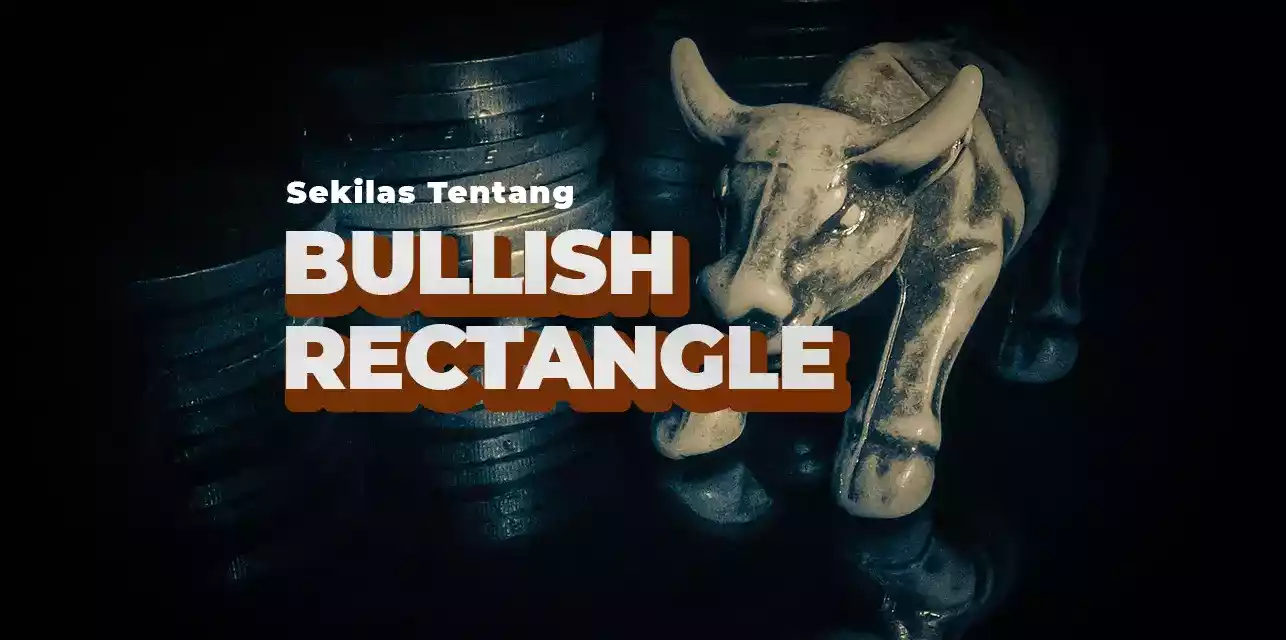Bullish rectangle is one type of continuation pattern that occurs on the chart. This time we will discuss the characteristics, requirements, examples, and how to trade from bullish rectangle. However, you can take a moment to read other articles such as How to Read Forex Candlesticks to Make a Profit, Complete!.
What is Bullish Rectangle
Characteristics of the Bullish Rectangle Pattern
This is probably the most recognizable chart pattern, and can be traded on any time frame, although its duration should not exceed 30 price bars. A rectangle is drawn using two parallel horizontal lines that extend as price continues to move sideways. A breakout occurs when the support or resistance line is broken and the price bar closes outside the pattern.
- Resistance line
- Support line
Requirements for a Bullish Rectangle
A continuation pattern that occurs in an uptrend, where traders look to enter long positions after price breaks through support and closes within the 'breakout zone'. Bullish Rectangle: Characteristics, Terms, Examples, and Trading Strategies.

Bullish Rectangle Example
Another feature that makes this pattern unique is the way it is traded. The setup appeals to both aggressive and conservative traders because the risk parameters are clearly defined no matter how you choose to trade it. The profit target after the breakout is a measured move that is equal in distance to the rectangle’s high and low points. More aggressive traders will execute a series of “range trades,” buying the support line and selling the resistance line, with stops hovering just beyond the breakout area. Using multiple contracts to trade the range is a great way to maximize profits when a breakout is anticipated.

For example, if the volume pattern lines up to signal a bullish breakout, 2 contracts could be purchased at the support line. You could then exit half the position for profit at the upper resistance line and hold the remaining contract through the breakout. You could also adjust your stop to exit the remaining contract at the 50% retracement line of the rectangle, or keep it just below the support line. More conservative traders would wait for confirmation of the breakout before entering a position, and then exit when the measured move is complete.
Bullish Rectangle Trading Strategy

- Resistance line
- Support line
- Area where price has broken through resistance
- Buy order (long entry)
- Place your stop loss
- Place your stop loss just below the lower parallel line of the rectangle (support level).
- See the chart below for an example of this:

- Resistance line
- Support line
- Area where price has broken resistance 1
- Buy order (long entry)
- Stop loss
Place your profit target
Measure the height of the rectangle and then place your profit target the same distance above the top of the top parallel line. See the chart below for an example of this:

- Resistance line
- Support line
- Area where price has broken resistance 1
- Buy order (long entry)
- Stop Loss
- Take advantage
How to trade bullish rectangle: method 2
Here is the second method to trade the bullish rectangle.Enter your trade
Like method 1, wait for the candlestick to close above the upper parallel line, breaking the rectangle resistance. Then, wait for price to retest the upper line – this broken resistance level is now turned into support – and place your buy order. See the chart below for an example of this:

- Resistance turns to support
- Support
- Buy order (long entry)
Place your stop loss
Place your stop loss just below the upper parallel line of the rectangle (the old resistance level that has now turned into support) See the chart below for an example of this:

- Resistance turns to support
- Support
- Buy order (long entry)
- Stop loss
Place your profit target
Like method 1, measure the height of the rectangle and then place your profit target the same distance above the top of its upper parallel line. See the chart below for an example of this:

- Resistance turns to support
- Support
- Buy order (long entry)
- Stop loss
- Take advantage
Advantages of Using Bullish Rectangle
There are several reasons why the rectangle pattern is a popular choice among traders when it comes to breakout strategies:- It is relatively simple to demarcate support and resistance lines within a rectangle.
- Can be implemented in different markets
- The concept is easy for novice traders to understand – recognize consolidation patterns within a pre-existing trend, then trade the breakout.
- Entry, stop and limit levels are easy to recognize and apply in trading
- Used as a breakout strategy or range bound strategy
After learning about the bullish rectangle, then you can apply the forex trading method from the bullish rectangle itself. In addition, make sure to register and get a 30% welcome bonus to maximize fund resilience while trading!
 Last:
Last: 







